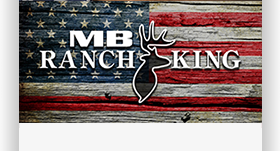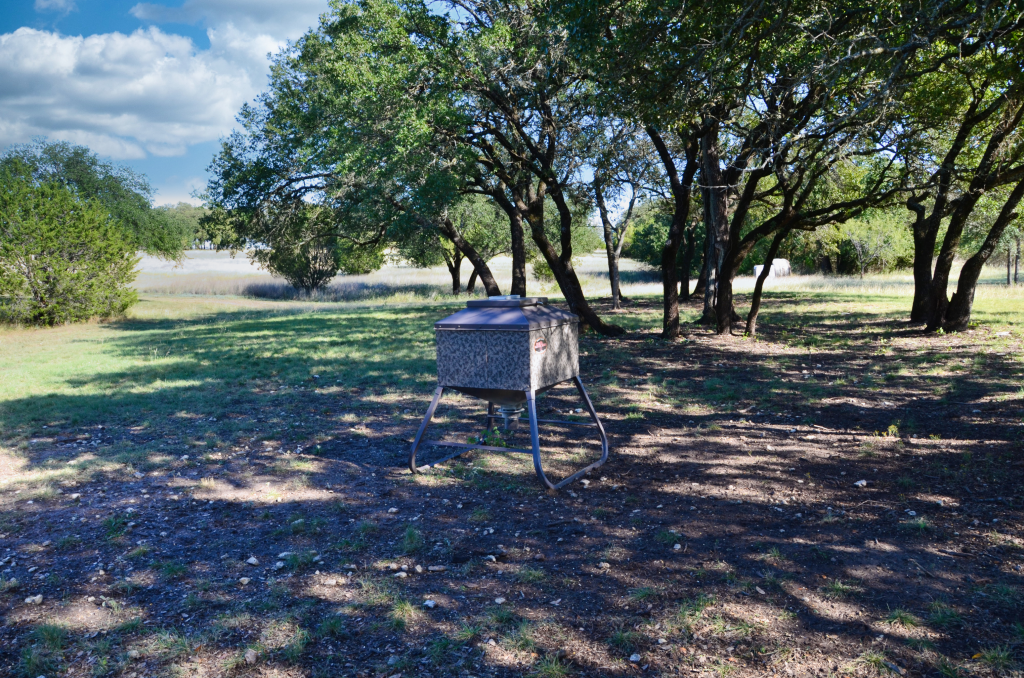
Choosing the right feeding strategy for deer is more than just a matter of preference. In the debate of timed protein deer feeders vs free choice deer feeders, key considerations like cost, deer health, and hunting goals come into play. This article cuts through the clutter to provide you with a clear-headed comparison that answers your most pressing questions.
Key Takeaways
- Deer utilize selective feeding habits and adjust their dietary intake based on seasonal availability. Implementing a timed feeder can encourage daylight feeding habits, which is beneficial for hunters looking to attract bucks during preferred hunting hours.
- Protein feeders are critical to deer growth and antler development, offering various feed options like pellets and corn; higher protein intake can lead to improved health and larger antlers, depending on overall diet quality and deer density.
- Choosing between timed and free choice protein feeders depends on factors like budget, herd size, and hunting goals; timed feeders offer controlled feeding times and reduced waste, while free choice feeders allow constant access but may require more frequent refills.
Understanding Deer Feeding Habits
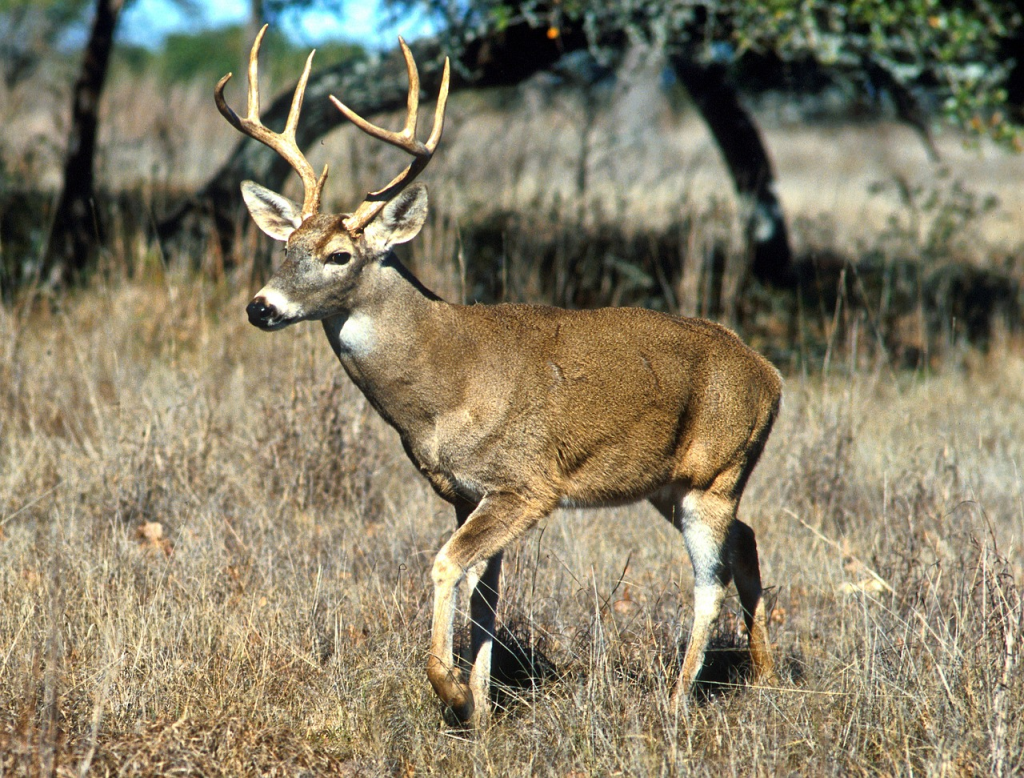
Delving into the world of deer feeding habits unveils a fascinating glimpse into how these animals thrive. Deer are selective feeders, courtesy of their evolutionary adaptations like a narrow snout and long tongue, which allow them to be meticulous in their choice of plant parts. Additionally, their salivary enzymes neutralize plant defense chemicals, enabling a diet that includes a wide range of plant materials.
Seasonal changes significantly influence their dietary habits, as deer adapt their forage selection to match the shifting availability and quality of plants, aligning with their metabolic needs throughout the year.

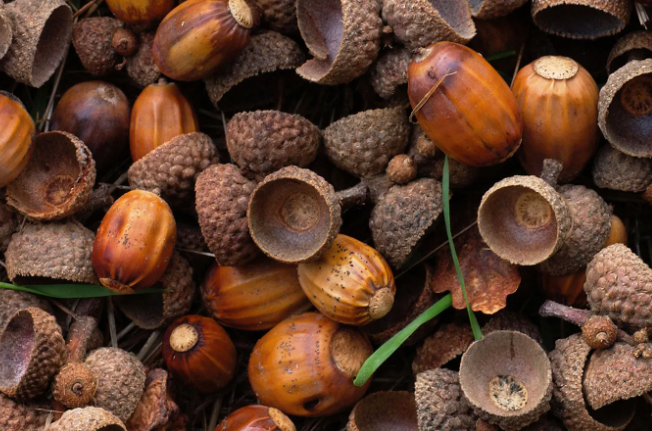
What Deer Eat
When it comes to what deer eat, their diet is overwhelmingly composed of browse, forbs, and mast, which account for more than 85% of their intake. This diet shifts with the seasons—autumn sees an increase in mast consumption like acorns, summer berries are favored, and in winter, deer in northern areas turn to leaf buds and evergreen leaves.
With over 400 plant species on the menu in the Southeast alone, deer enjoy a varied diet, although a core subset of these species forms the bulk of their diet.
Daylight Hours vs Nighttime Feeding
The rhythm of deer feeding can be influenced by how we provide their food. Timed feeders can be programmed to encourage deer to feed during daylight hours, aligning with the times when hunters are most active. Conversely, free choice feeders can lead to an increase in nocturnal feeding, which might be less desirable from a hunting perspective.
Thus, timed feeders offer a strategic advantage by promoting daylight feeding, which can be beneficial for hunters looking to observe and interact with deer during the day.
Protein Feeders: An Overview
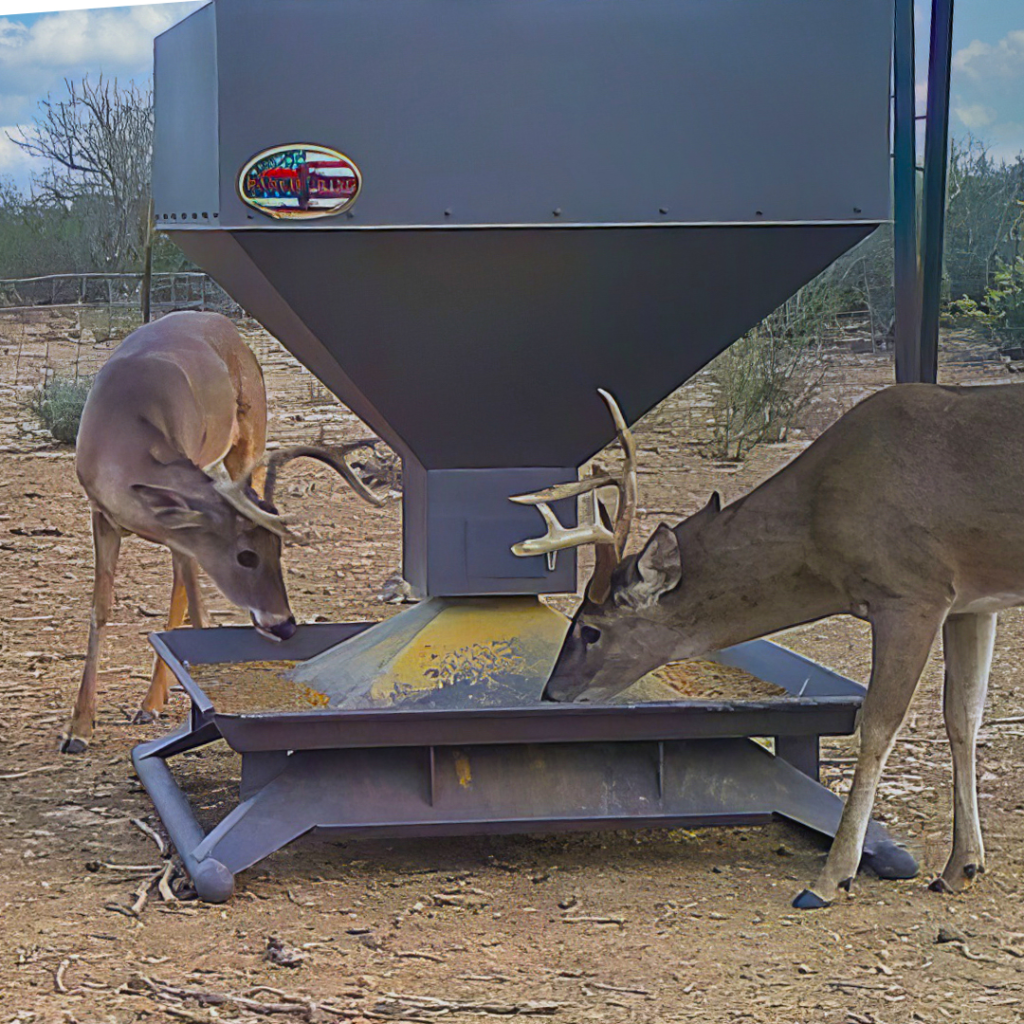
When considering the nutritional needs of deer, protein feeders are indispensable tools in providing a diet rich in protein, essential for their growth and well-being. These feeders play a pivotal role in supporting the physiological functions and development of deer, especially when natural forage may not suffice. Among the types of protein feeders available for deer, the free choice feeder is an option that allows for managing feed amounts and timing effectively.
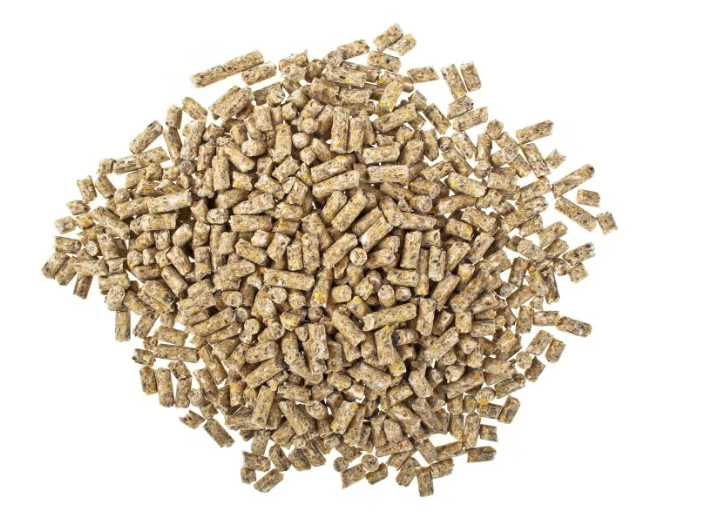
Types of Protein Feed: Pellets, Corn, and More
Protein feeders offer a smorgasbord of options, including supplemental feed protein in forms such as:
- blocks
- pellets
- corn feeder
- cottonseed
- hay Additionally, a protein feeder can be an essential tool for wildlife management.
Deer protein pellets, in particular, are crafted to enhance diets that may be deficient in protein, while an initial mix of corn with protein pellets can ease the transition to this new feed source.
Antler Growth and Overall Health Benefits
The significance of protein in a deer’s diet extends to antler growth and overall health, which can also be influenced by deer density in a given area. A protein-rich diet is vital for bucks to reach their antler growth potential, and with a recommended dietary protein content ranging from 16-17%, and sometimes up to 24%, protein is crucial for the nourishment of all body organs in deer.
However, when protein is scarce, muscle nourishment takes precedence over antler growth, leading to smaller antlers. Quality nutrition across generations can result in larger body sizes and better antler development, though this is also influenced by genetics and natural food availability.
Free Choice Protein Feeders
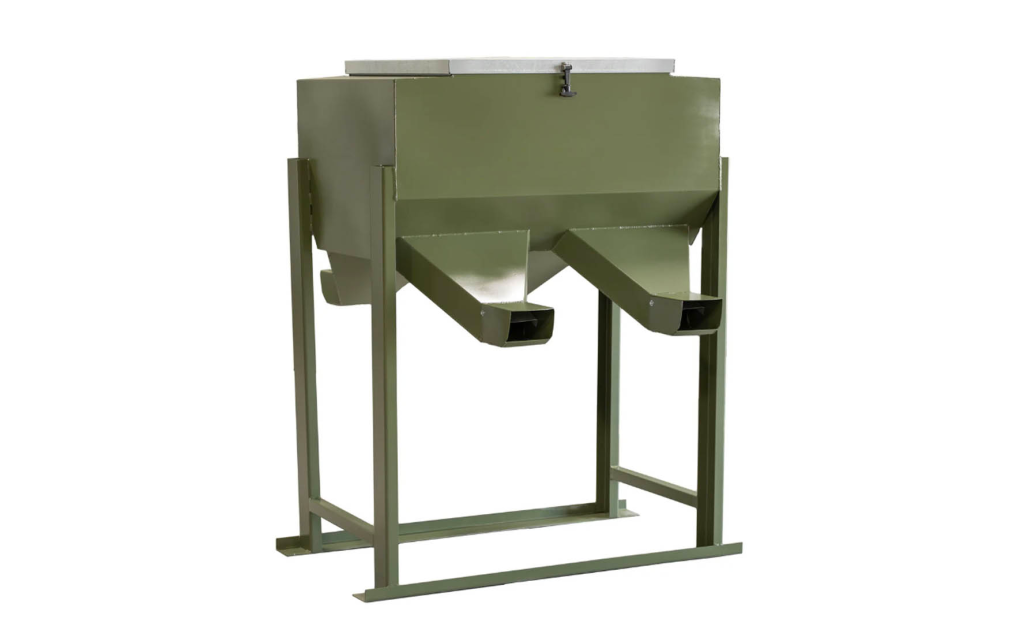
Free choice protein feeders come in various designs, such as free choice gravity feeder, block, and stand & fill types, to meet diverse feeding needs. They are celebrated for their simplicity and effectiveness, operating seamlessly without the need for electricity. These feeders keep feed cool, dry, and fresh, catering to the deer’s natural grazing habits by offering round-the-clock access to feed free choice. Integrating a free choice feeder into your setup allows for managing feed amounts and timing efficiently, which can be adapted to cut back during hunting season or to attract deer during daytime hours, minimizing waste and avoiding nocturnal feeding patterns.
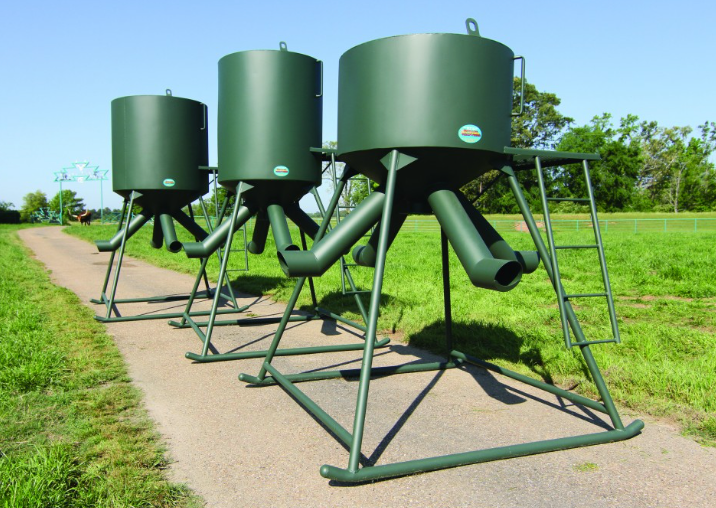
Gravity Feeder Mechanism
The mechanism of gravity feeders is ingeniously simple. Feed naturally flows down due to gravity into an area where deer can easily consume it, ensuring a consistent and uninterrupted supply. Their design is user-friendly, placed near ground level for effortless setup, filling, and relocation, emphasizing convenience and reliability without dependence on external power sources.
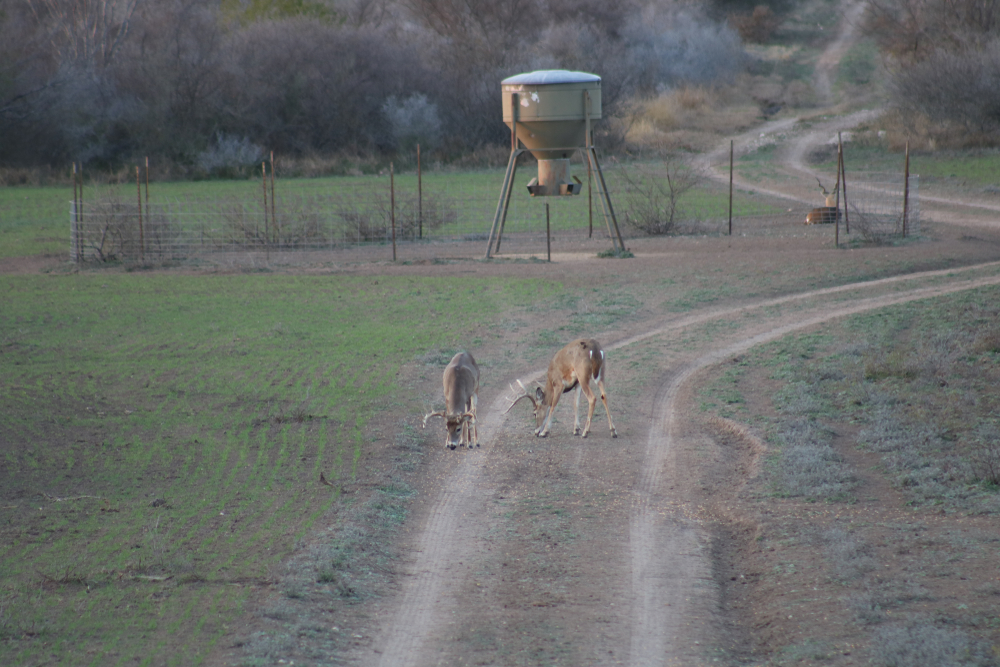
Benefits of Free Choice Feeding
Unrestricted access to feed via free choice feeders can lead to improved deer growth and the potential for bucks to develop larger antlers. A clean feeder pen, devoid of brush or vegetation, allows deer to better detect predators, reducing stress and increasing feeding time, which can have a positive impact on the health of the deer herd.
Disadvantage of Free Choice Feeding
Be aware that attracting non-target wildlife such as hogs and cattle can lead to a significant amount of feed wastage. However, if regular visual inspection of your feeders isn’t feasible, this remains your sole alternative.
Timed Feeders: A Closer Look
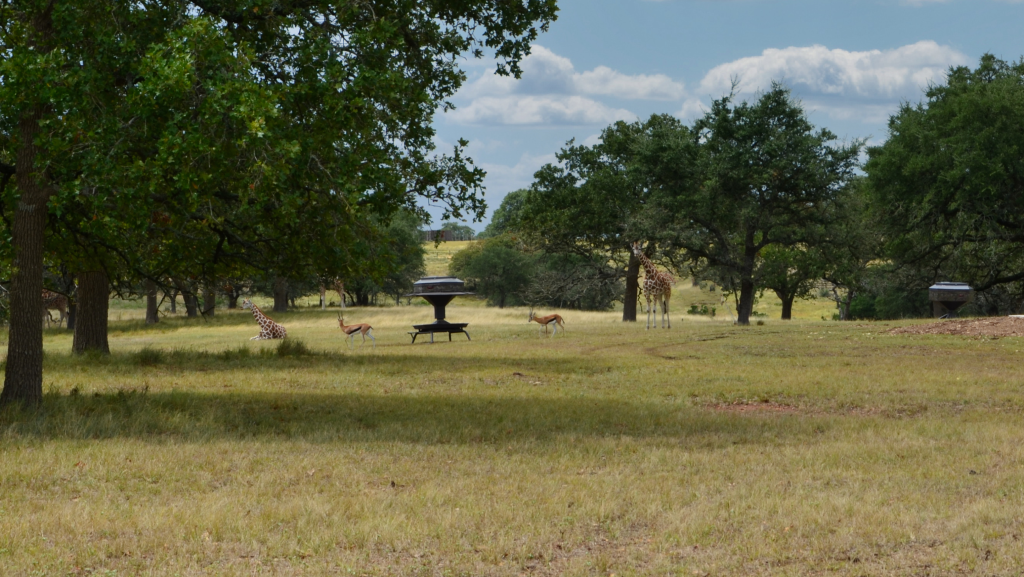
Timed deer feeders, or timed feeders, are a marvel of precision, designed to dispense feed at specific intervals, granting controlled and scheduled access to protein feed for deer. They come equipped with digital timers and motors that can be programmed for multiple feed times per day, offering the ability to train deer to arrive during these scheduled feeding times. The Hammer Feeding System enhances this functionality by allowing for feeding in small doses, particularly as an attractant for mature bucks during early morning and late evening, thus managing feeding time, budget, and the pattern of deer activity around the feeder efficiently.
The capacity of these feeders is a key consideration, with larger-capacity feeders requiring less frequent refills, enhancing long-term feed management efficiency.
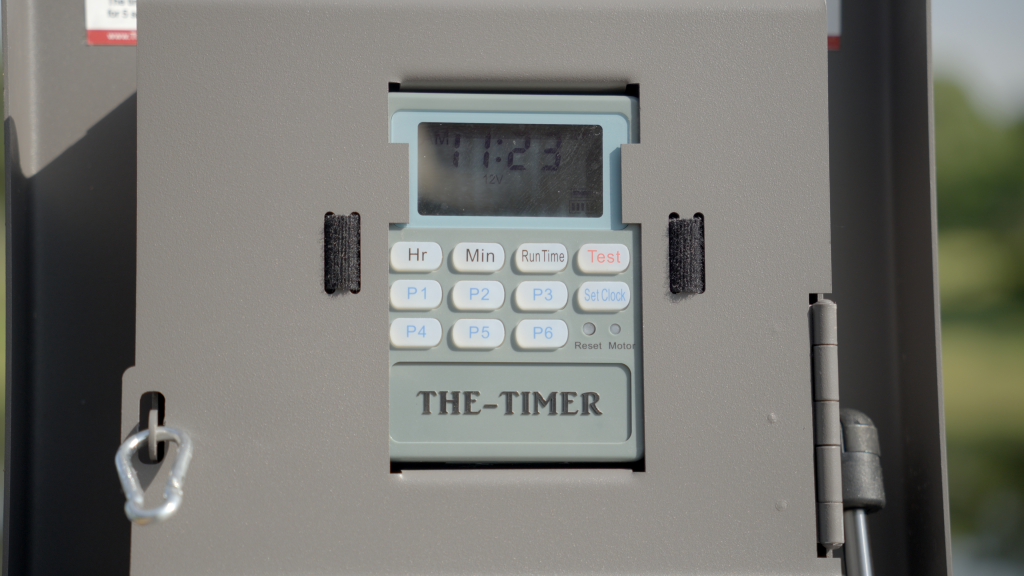
Advantages of Timed Feeding
The strategic deployment of timed feeding systems, like The Hammer, offers several benefits:
- Minimizes waste and ensures deer eat at set times
- Reduces the amount of feed left uneaten
- Dispenses feed when non-target animals are less active, limiting access to the intended deer population
- Reduces feed consumption by unwanted wildlife
- Enhances budget control
Comparing Feeding Strategies: Which is Best for Your Needs?
Choosing between free choice protein feeders and timed feeders should be based on a careful evaluation of factors such as herd size, location, and season, as these variables influence the amount of feed consumed by deer. One option to consider is a seasons timed protein feeder, which can help you manage the feeding process more effectively.
Feeding Budget Considerations
Budget considerations are paramount when selecting a feeding strategy. Protein typically comes at a higher cost per bag than corn, influencing the overall costs of a feeding program due to the volume of feed consumed. Protein feeders may require frequent refills, with monthly rates affected by variables such as herd size and environmental conditions.
On the other hand, timed feeders dispensing corn can be more cost-effective as they can last several weeks before needing a refill.
Hunting Purposes: Attracting More Bucks with Bigger Racks
For hunting purposes, nutritional supplements can significantly influence antler size, with calcium, phosphorus, and trace minerals being crucial for the development of larger, healthier antlers. Timed feeders not only provide convenience but also enhance hunting success by attracting deer with the scheduled dispersal of feed during daylight hours. However, the effectiveness of supplemental feeding in increasing antler sizes must be weighed against the financial investment, as some landowners observe that antler sizes may not exceed regional averages despite the supplemental feeding.
Feeder Pen and Rain Sensor Add-Ons

Enhancing the functionality and efficiency of deer feeders can be achieved through the addition of feeder pens and rain sensors. Feeder pens ensure that feed is accessed only by targeted deer, which is critical in wildlife management. Rain sensors protect the feed from moisture, maintaining its quality and preventing spoilage, thus extending the life of the feed and contributing to the cost-effectiveness of the feeding program.
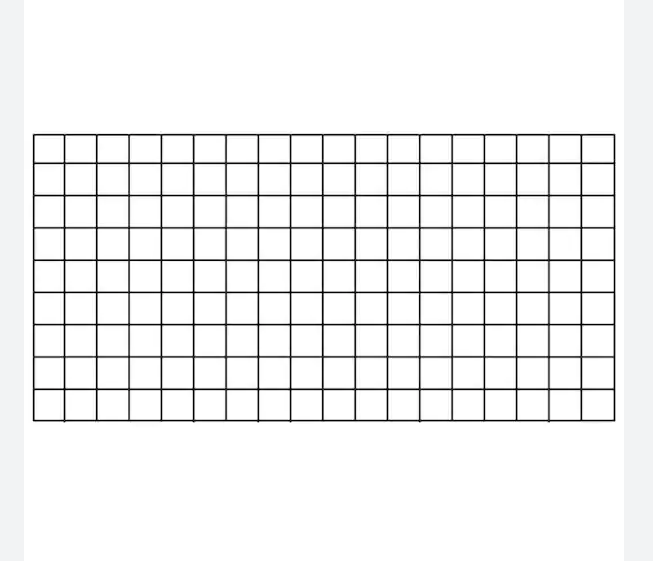
Feeder Pen for Target Animals
Feeder pens can be specifically designed to selectively allow access for target animals while keeping out non-target species. Some features to consider when designing feeder pens include:
- Using hog panels to create a sturdy and secure enclosure
- Designing round-shaped pens to prevent animals from getting trapped in corners
- Incorporating safety features such as smooth edges and no sharp points
- Ensuring the size of the pen is appropriate for the number of deer you want to feed
By implementing these design considerations, you can create feeder pens that cater to the welfare and safety of deer while effectively excluding unwanted animals like feral hogs, thus ensuring proper feeding deer practices.
Summary
As we come to the end of this journey, it’s clear that the choice between timed protein feeders and free choice feeders is not one-size-fits-all. It requires a nuanced understanding of deer feeding habits, the types of feed available, and the unique circumstances of your property and deer herd. The decision rests on balancing the benefits of each feeding strategy with practical considerations such as budget, herd management goals, and hunting preferences. Whether it’s the simplicity and constant availability of free choice feeders or the precision and waste reduction of timed feeders, both options offer pathways to supporting the health and growth of deer populations.
Frequently Asked Questions
What are the main differences between timed and free choice protein feeders?
In conclusion, timed protein feeders provide controlled feeding intervals to reduce waste and target desired feeding hours, while free choice protein feeders offer continuous access to feed but may lead to increased nocturnal feeding and higher consumption.
Can supplemental feeding really impact antler growth?
Supplemental feeding can impact antler growth by providing essential nutrients, but the outcome depends on genetics and natural food sources as well. Consider the investment in supplemental feeding carefully to evaluate potential results.
Are there any cost-effective strategies for feeding deer?
Yes, using timed feeders dispensing corn and implementing feeder pens and rain sensors can be cost-effective strategies for feeding deer by reducing the frequency of refills and minimizing feed wastage.
What safety features should be included in a feeder pen?
Feeder pens should include hardware cloth to prevent entanglement and be large enough for deer to jump out safely. Round-shaped designs also minimize the risk of deer getting trapped.
How do rain sensors enhance the functionality of deer feeders?
Rain sensors trigger mechanisms to shield deer feed from moisture, preventing clumping and spoilage, which in turn maintains the quality of the feed and keeps it dry for deer consumption.

